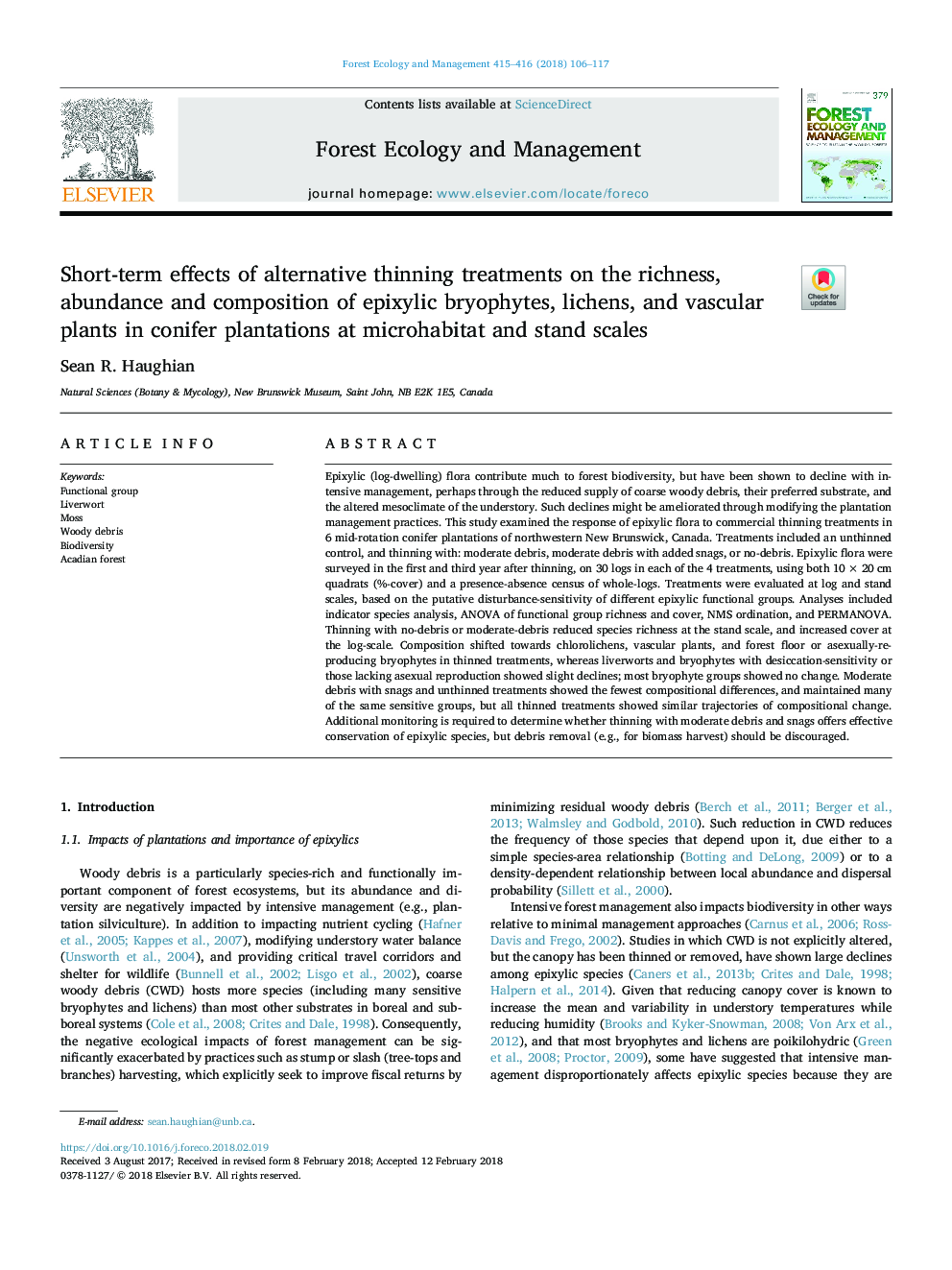| کد مقاله | کد نشریه | سال انتشار | مقاله انگلیسی | نسخه تمام متن |
|---|---|---|---|---|
| 6541773 | 1421343 | 2018 | 12 صفحه PDF | دانلود رایگان |
عنوان انگلیسی مقاله ISI
Short-term effects of alternative thinning treatments on the richness, abundance and composition of epixylic bryophytes, lichens, and vascular plants in conifer plantations at microhabitat and stand scales
دانلود مقاله + سفارش ترجمه
دانلود مقاله ISI انگلیسی
رایگان برای ایرانیان
کلمات کلیدی
موضوعات مرتبط
علوم زیستی و بیوفناوری
علوم کشاورزی و بیولوژیک
بوم شناسی، تکامل، رفتار و سامانه شناسی
پیش نمایش صفحه اول مقاله

چکیده انگلیسی
Epixylic (log-dwelling) flora contribute much to forest biodiversity, but have been shown to decline with intensive management, perhaps through the reduced supply of coarse woody debris, their preferred substrate, and the altered mesoclimate of the understory. Such declines might be ameliorated through modifying the plantation management practices. This study examined the response of epixylic flora to commercial thinning treatments in 6 mid-rotation conifer plantations of northwestern New Brunswick, Canada. Treatments included an unthinned control, and thinning with: moderate debris, moderate debris with added snags, or no-debris. Epixylic flora were surveyed in the first and third year after thinning, on 30 logs in each of the 4 treatments, using both 10â¯Ãâ¯20â¯cm quadrats (%-cover) and a presence-absence census of whole-logs. Treatments were evaluated at log and stand scales, based on the putative disturbance-sensitivity of different epixylic functional groups. Analyses included indicator species analysis, ANOVA of functional group richness and cover, NMS ordination, and PERMANOVA. Thinning with no-debris or moderate-debris reduced species richness at the stand scale, and increased cover at the log-scale. Composition shifted towards chlorolichens, vascular plants, and forest floor or asexually-reproducing bryophytes in thinned treatments, whereas liverworts and bryophytes with desiccation-sensitivity or those lacking asexual reproduction showed slight declines; most bryophyte groups showed no change. Moderate debris with snags and unthinned treatments showed the fewest compositional differences, and maintained many of the same sensitive groups, but all thinned treatments showed similar trajectories of compositional change. Additional monitoring is required to determine whether thinning with moderate debris and snags offers effective conservation of epixylic species, but debris removal (e.g., for biomass harvest) should be discouraged.
ناشر
Database: Elsevier - ScienceDirect (ساینس دایرکت)
Journal: Forest Ecology and Management - Volumes 415â416, 1 May 2018, Pages 106-117
Journal: Forest Ecology and Management - Volumes 415â416, 1 May 2018, Pages 106-117
نویسندگان
Sean R. Haughian,